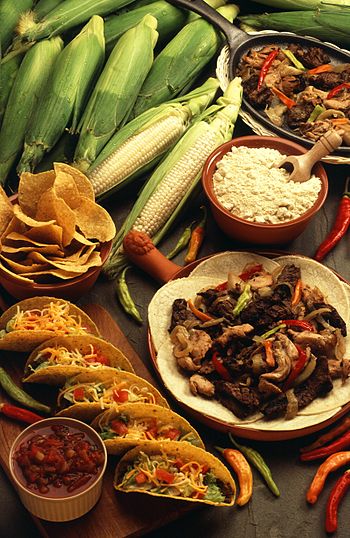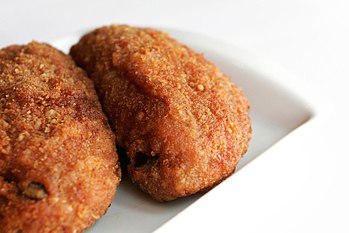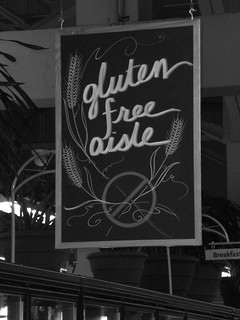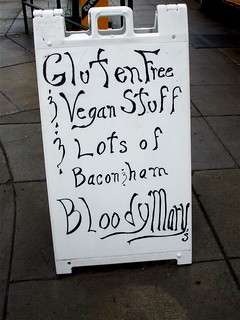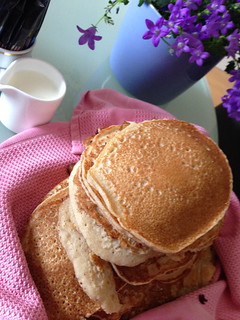When you or a member of your family are told by your doctor that you have celiac disease, you will most likely feel overwhelmed. Of course, you may also feel relieved to know that your symptoms are easily treated, and damage to the small intestine can even be reversed with the proper diet.
Then you find yourself slipping back into overwhelmed mode. You may even be tempted to stop at the grocery store on your way back from the doctor's office to grab all the foods in the 'gluten-free' aisle you can get your hands on. However, this will surely cause even more frustration.
So, what should you do when you are diagnosed with celiac disease? Read. Study. Learn. Let's take a look at a few simple suggestions for changing to a gluten-free household.
Learn to Read Labels
One of the best things that has happened in the gluten-free world is new food labeling laws. All foods manufactured and labeled after January 1, 2006, must be labeled in plain language with the eight most prevalent food allergens, which includes wheat. If any wheat gluten is used in any form and in any amount, it must be clearly stated on the label. Even if gluten is used in coloring or flavoring, it must be listed.
Of course, that just covers wheat gluten. You will still need to watch ingredient labels for other sources of gluten, such as barley (malt) and rye. You may wish to avoid oats, as well, even though they are not actually a gluten-containing product, because there may be cross-contamination in grain packaging and processing plants.
Learn to Recognize Gluten
Any simple internet search for the term 'gluten free foods' will give you lists of foods with gluten, foods without gluten, and foods with 'hidden' gluten. Start by creating a list for yourself of all foods with gluten (obvious foods like wheat flour, crackers, pasta, etc.), along with the potential 'hidden' sources of gluten (ketchup, broth, soy sauce, croutons, stuffing, marinades, dressings, etc.)
Now make a list of all the foods that are naturally gluten free. Here is where your whole fruits, vegetables, and proteins such as meat, fish, chicken, and eggs come in. I guarantee, once you list all the foods you can eat without worry, you'll feel better about sacrificing other foods. (Not to mention, most of these foods are actually healthier for you anyway!)
Purge the Pantry
With a good understanding of how to read labels, and with your lists in hand, you are ready to begin at the beginning - in your kitchen. Rather than approach the grocery store yet, dig into your pantry, refrigerator, and freezer and purge anything that you know to have gluten, such as anything made with wheat flour.
Once you have cleaned out the obvious sources of gluten, it's time to put your label reading expertise to work. Take your time and read the label of each packaged food, looking for both the allergen listing and the ingredient list. Double check the labels against the list you made of foods with gluten, and remember to look for the 'hidden' gluten sources. This will take some time, but you and your health are worth the effort. Once you get used to doing this, you will quickly be able to recognize sources of gluten with just a glance.
Time to Shop
The reason you go through your kitchen first is because you need to see how much food you already have in the house that is actually gluten-free. You may be surprised to find plenty to get you by for a few days. If not, then get ready to take your lists to the grocery store.
|
|
| Some gluten-free foods. (Photo credit: Wikipedia) |
However, before you embark on this journey, remind yourself that you don't need to stock the kitchen full of special 'gluten-free' foods. You'll be overwhelmed (and over budget) if you start out by buying these specialty items. Many foods (especially whole, non-processed foods) are
naturally gluten free, making the shopping much easier, especially in the beginning.
Start with the basics so you can eat healthy without the frustration of trying to discover new foods. Shop the perimeters of the store, which is where your fresh produce and proteins typically can be found. Stick to the foods that you know are gluten-free to avoid label reading over-load. There is plenty of time for that later.
Stock up on naturally gluten-free foods and plan out your first few meals. Try fish seasoned with real lemon and fresh dill, and a side dish of quinoa tossed with diced fresh vegetables. Skip all the prepackaged foods to make these first meals easier - and healthier as well! Then you can branch out and look for other foods that are gluten-free when you're feeling more adventurous.
This is a learning process, so take it slow and you can relax and enjoy (finally!) how good you feel after a delicious meal. And be sure to keep your eye on this blog for some more tasty gluten-free recipes!

